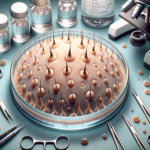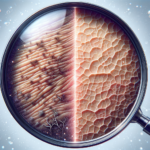Understanding the Causes of Skin Sagging
As we age, our skin naturally loses its elasticity and firmness. This is primarily due to a decrease in collagen and elastin production, two proteins that are vital for maintaining skin structure and resilience. Environmental factors such as sun exposure, pollution, and lifestyle choices like smoking can accelerate this process. Additionally, significant weight loss can result in excess skin that appears saggy.
Collagen, which makes up about 75% of our skin, provides structural support, while elastin allows the skin to return to its original position after stretching or contracting. With age, the production of these proteins slows down, leading to the appearance of wrinkles and sagging skin. The skin’s ability to retain moisture also diminishes, contributing to a loss of plumpness.
Several factors contribute to skin sagging:
- Genetics: Your genetic makeup plays a role in how your skin ages.
- Sun Exposure: UV rays break down collagen and elastin fibers, accelerating aging.
- Gravity: Over time, gravity pulls the skin downward, causing it to sag.
- Hormonal Changes: Changes, especially during menopause, can affect skin elasticity.
Understanding these causes helps in choosing the right approach to address sagging skin effectively.
Non-Invasive Skin Tightening Treatments
For those seeking to improve skin firmness without surgery, non-invasive treatments offer promising results. These procedures use various technologies to stimulate collagen production and enhance skin elasticity. One popular option is radiofrequency (RF) therapy, which uses energy waves to heat the deep layers of the skin, encouraging collagen production.
Ultrasound therapy is another technique, utilizing sound waves to penetrate the skin and promote collagen regeneration. This method is often used for tightening the skin on the face and neck. Laser treatments can also be effective, targeting specific areas to rejuvenate skin and reduce sagging.
These treatments are generally safe and require minimal downtime. They are suitable for individuals looking for gradual improvements without the risks associated with surgical procedures. However, the results may vary depending on the individual’s skin type and the severity of sagging. It is essential to consult with a dermatologist to determine the most appropriate treatment plan.
Benefits of non-invasive treatments include:
- Minimal Recovery Time: Most procedures allow patients to resume normal activities immediately.
- Gradual, Natural-Looking Results: Improvements appear over time as collagen production increases.
- Customizable: Treatments can be tailored to target specific areas of concern.
These options provide an excellent alternative for those wary of surgical interventions.
Incorporating Skin Tightening into Your Skincare Routine
Beyond professional treatments, there are everyday practices and products that can support skin tightening efforts. A comprehensive skincare routine can help maintain and enhance the results of non-invasive treatments. Look for products that contain ingredients known for their firming properties, such as retinoids, peptides, and antioxidants.
Retinoids, derived from vitamin A, are renowned for their ability to boost collagen production and improve skin texture. Peptides, on the other hand, act as building blocks of proteins, supporting skin structure and resilience. Antioxidants like vitamin C protect the skin from environmental damage and promote a youthful appearance.
Here are some tips to incorporate into your skincare routine:
- Hydration: Keep the skin well-moisturized to maintain elasticity.
- Sun Protection: Use a broad-spectrum sunscreen daily to prevent UV damage.
- Healthy Lifestyle: A balanced diet and regular exercise can improve skin health.
- Facial Exercises: These can strengthen facial muscles and improve skin tone.
By combining these practices with professional treatments, you can achieve and maintain firmer, more youthful-looking skin. Consistency is key, and patience is essential, as results may take time to become evident.








